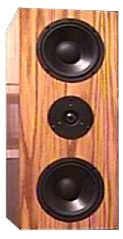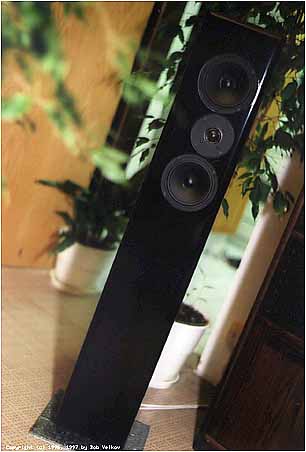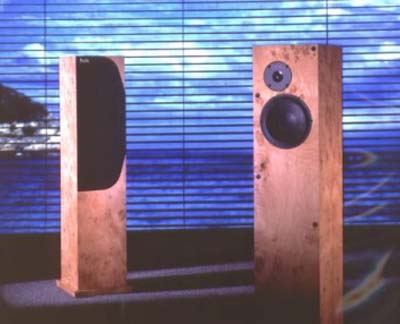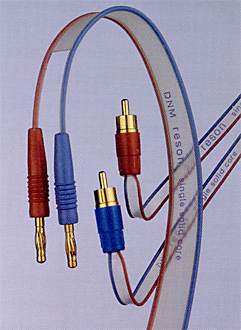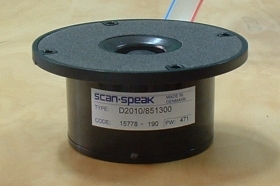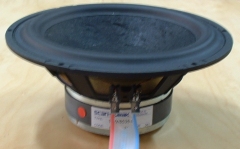Prozac
2.5
By Echo Loft Forumer Fishball79
|
Introduction
(Or I shouldn't have invited him over)
|
||
|
A friend came by my place one weekend and brought along his CDs. We listened to them and he was visibly impressed by what he heard. He approached me next week for some advice on upgrading his own stereo as he feels it is not giving him what he wants.
I was there with
him when he purchased his first stereo, a pair of Mirage FRX-3 and a
Rotel RA971 integrated amp. It was a coincidence that he was later given
a Rotel CD player, matching his amp. It gave him the sound he wanted
within his tight budget. Uncoloured with sufficient midbass. This really
goes well with his kind of music which was japanese rock, rock and more
rock. |
||
|
|
||
|
Which
Speaker?
|
||
|
He was a student and had a limited budget of around $1000. Since that kind of money can only get him some floor stander that might not even sound any much better than his current pair save for lower bass extension, I suggested to him to DIY something. Having seen/heard some and read many success stories, I thought it was not difficult to make loudspeakers. Moreover, we were not setting out to create a new design, merely using existing tried & true ones. He was game to try and we set about doing it. Our goals in this project were simple.
Having the rather
unrestricted goal in mind, we set out to find the perfect speaker design
online. |
||
|
|
||
|
Dayton
DIY
|
||
| First
up were the very reccomended Dayton speakers from http://www.partsexpress.com
Parts Express mainly sells parts but have come up with designs for their
own line of drivers, the Dayton. Someone even dedicated a site to designs
he made with their drivers! We were then bent on trying out the Dayton
III due to its low price. Its so cheap we can almost squeeze enough speakers
into the budget for a home theater! When we tried ordering online but
to our astonishment, the shipping cost for a pair of 6.5" midrange
and tweeters came up to US$100+! This was too much considering that the
project was supposed to be around $4-500. Beaten but not down, we searched
on. |
||
|
|
||
|
Lynn
Olsen's Ariel
|
||
|
Next, we checked out Lynn Olsen's Ariel. It has one of the best reputation online and have gone through many variations to improve the sound further. They are easy to drive and reviews were most favorable. Unfortunately the enclosure design was a major PITA. Although our enthusiasm was immense, we lacked highly in the woodworking department. If the Ariel enclosures
were to be built by a professional carpenter, it'll look good, sound
great but probably cost us more than $1000 a pair. This idea was thrown
out as well. |
||
|
Dampening Material
|
||
|
Shopping
Friend ordered almost everything from Leda. Drivers, crossover parts, binding post cups and spikes. He chose 12ga copper foil inductors to be used in the woofer crossover and normal air core wire wound ones for the rest. This turned out to be a wise choice later on. We tried finding 1" long screws that would fit the drivers' screw holes. It turns out they were 1mm smaller in diameter than the conventional screws hardware stores sell. We later bought some 1/2" screws from Leda. I donated speaker foam gaskets and helped him buy the plastic boxes for crossover from Sim Lim Tower. |
||
|
|
||
|
Cost
Breakdown
|
||
| Item |
Qty
|
Cost*
|
| Scan Speak D2010/8513 Silk Dome Tweeter |
2
|
$
192
|
| Scan Speak 18W/8535 Carbon Paper Midrange Woofer |
2
|
$
440
|
| Crossover parts |
-
|
$
180
|
| Custom 1" MDF Cabinets with Veneer finish |
2
|
$
500
|
| Binding Posts |
2
|
$
024
|
| Floor Spikes |
8
|
$
020
|
| DNM Reson Speaker Cable |
3m
|
$
045
|
| Dacron Dampening Material |
-
|
$
050
|
| Total |
$1451
|
|
